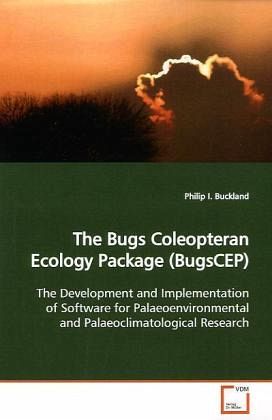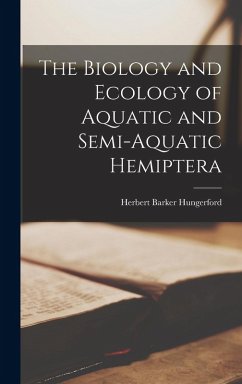
The Bugs Coleopteran Ecology Package (BugsCEP)
The Development and Implementation of Software for Palaeoenvironmental and Palaeoclimatological Research
Versandkostenfrei!
Versandfertig in 6-10 Tagen
52,99 €
inkl. MwSt.

PAYBACK Punkte
26 °P sammeln!
This book describes the development and practical application of a unique database orientated software package, BugsCEP, for environmental, climatic and biodiversity reconstruction from beetle assemblages. BugsCEP consists of a database of ecology and distribution data for over 9400 insect taxa, and includes temperature tolerance data for 436 species. It contains abundance and summary data for over 770 sites, most of the known European Quaternary fossil coleopteran record, supported by a bibliography of over 3700 sources. Built in statistics, including a specially developed habitat classificat...
This book describes the development and practical
application of a unique database orientated software
package, BugsCEP, for environmental, climatic and
biodiversity reconstruction from beetle assemblages.
BugsCEP consists of a database of ecology and
distribution data for over 9400 insect taxa, and
includes temperature tolerance data for 436 species.
It contains abundance and summary data for over 770
sites, most of the known European Quaternary fossil
coleopteran record, supported by a bibliography of
over 3700 sources. Built in statistics, including a
specially developed habitat classification system,
provide semi-quantitative environmental
reconstructions to aid in the interpretation of
sites. BugsCEP's querying and reporting functions
also increase the efficiency with which analyses can
be undertaken, including the facility to explore the
fossil record of species by searching ecology
and distribution data. The Mutual Climatic Range
(MCR) reconstruction method is implemented and
improved upon, including predictive modelling and
the graphical output of reconstructions and climate
space maps. BugsCEP is available from
www.bugscep.com.
application of a unique database orientated software
package, BugsCEP, for environmental, climatic and
biodiversity reconstruction from beetle assemblages.
BugsCEP consists of a database of ecology and
distribution data for over 9400 insect taxa, and
includes temperature tolerance data for 436 species.
It contains abundance and summary data for over 770
sites, most of the known European Quaternary fossil
coleopteran record, supported by a bibliography of
over 3700 sources. Built in statistics, including a
specially developed habitat classification system,
provide semi-quantitative environmental
reconstructions to aid in the interpretation of
sites. BugsCEP's querying and reporting functions
also increase the efficiency with which analyses can
be undertaken, including the facility to explore the
fossil record of species by searching ecology
and distribution data. The Mutual Climatic Range
(MCR) reconstruction method is implemented and
improved upon, including predictive modelling and
the graphical output of reconstructions and climate
space maps. BugsCEP is available from
www.bugscep.com.












